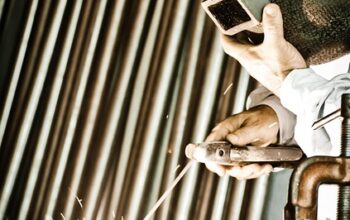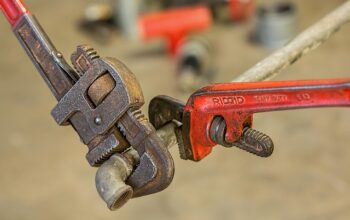When embarking on home repair tasks, it's crucial to approach them with caution and preparation. Common DIY mishaps include amateur electrical work, improper painting prep, neglected plumbing maintenance, subpar structural fixes, and using the wrong building materials, all of which can lead to more significant issues and expenses if not addressed early. For example, incorrect electrical work poses a risk of fire or electrocution, highlighting the necessity of knowing one's limits and when to seek professional help. Similarly, poor painting practices and overlooked plumbing leaks can result in long-term surface damage and extensive water damage, respectively. Structural repairs that aren't executed correctly can compromise your home's safety and integrity. To prevent these pitfalls, it's essential to have a well-equipped toolkit with fundamental tools like pliers, wrenches, screwdrivers, hammers, and a selection of materials such as nails, screws, adhesives, and sealants on hand. This readiness, combined with access to detailed guides for issues like leaky faucets and clogged drains, can enable homeowners to perform competent repairs without the need for costly professional services. The right tools, materials, and guidance are key to successful DIY home repair and maintenance, ensuring that your home remains in top condition.
When tackling home repair projects, even the most well-intentioned DIY endeavors can lead to mishaps. This article serves as a comprehensive guide for navigating common DIY pitfalls and their solutions, ensuring your handyman skills are up to par for any home maintenance challenge. We’ll explore essential tools and materials every homeowner should have on hand for quick fixes, and provide detailed step-by-step guides to elevate your repair work to a professional standard. Master home repair and maintenance with practical insights that transform your approach to home improvement projects.
- Identifying Common DIY Home Repair Mishaps and Their Solutions
- Essential Tools and Materials Every Handyman Should Have On-Hand for Quick Fixes
- Step-by-Step Guides to Professional-Level Fixes for Frequent DIY Failures
Identifying Common DIY Home Repair Mishaps and Their Solutions

When tackling home repairs, even the most well-intentioned DIY enthusiasts can encounter mishaps. Identifying common issues is the first step in preventing them from escalating. One prevalent mistake is improperly handling electrical work. Amateur attempts to rewire or repair electrical systems can lead to dangerous shorts, fires, or electrocution. It’s crucial to know one’s limits and when to call a licensed electrician. Another frequent error is neglecting the importance of proper ventilation during painting or using the wrong type of paint for the surface, leading to peeling or discoloration. To rectify such issues, ensure that surfaces are clean, well-prepared, and that you select the correct paint formulation for your project. Similarly, water leaks often result from improperly installed or maintained plumbing fixtures. Detecting these early can save homeowners from significant water damage and costly repairs. Solutions include tightening connections, replacing washers, or addressing any corrosion in pipes. In the realm of structural repairs, missteps like incorrectly patching drywall or using inappropriate materials for roof maintenance can compromise the integrity of your home. Correcting these blunders may involve removing and reinstalling the flawed repair, using the right type of joint compound for drywall, and performing regular inspections and maintenance on the roof to prevent leaks and structural weaknesses. Home Repair and Maintenance are integral to maintaining a safe and comfortable living environment, and recognizing these common mishaps can save time, money, and frustration in the long run.
Essential Tools and Materials Every Handyman Should Have On-Hand for Quick Fixes

When it comes to home repair and maintenance, having a well-stocked toolkit is indispensable for any handyman looking to tackle DIY failures swiftly and effectively. A robust set of tools can mean the difference between a minor issue and a major headache. Essential among these are a reliable set of pliers, adjustable wrench, and screwdrivers in various sizes. These tools are versatile for tasks ranging from tightening nuts and bolts to prying open stubborn packaging. A high-quality hammer with a claw on one side is another must-have, ideal for driving nails or pulling out old ones without causing damage to the surrounding materials. For more precise work, a set of precision screwdrivers will be invaluable, especially when dealing with electronics or fine furniture.
Beyond tools, having the right materials on hand is equally crucial for home repair and maintenance tasks. A selection of fasteners, including nails, screws, and bolts in different lengths and types, ensures that you can secure items as needed. Spare faucet washers and valve cores are essential for fixing leaks without having to make a special trip to the store. Basic building materials like wood scraps, drywall compound, and joint compound can serve as temporary fixes or provide the necessary materials to complete small projects. Additionally, a variety of adhesives, from silicone sealant to epoxy putty, will address a range of bonding tasks, from sealing gaps to repairing broken items. Keeping these tools and materials readily accessible not only streamlines the repair process but also empowers homeowners to confidently handle various home repair and maintenance challenges that arise.
Step-by-Step Guides to Professional-Level Fixes for Frequent DIY Failures

When tackling home repair and maintenance tasks, even the most seasoned DIY enthusiasts can encounter setbacks. Common issues like leaky faucets, clogged drains, or electrical wiring faults can often be resolved with a step-by-step guide tailored to each problem. These guides offer a clear, sequential approach to common repairs, ensuring that homeowners can achieve professional-level fixes without the need for costly professional services. For instance, a guide on repairing a leaky faucet will walk you through shutting off the water supply, disassembling the faucet, identifying and replacing worn components, and reassembling the fixture. Similarly, unclogging a drain involves understanding the nature of the blockage, using appropriate tools like a plumber’s snake or a plunger, and following the steps to clear the obstruction effectively. These resources are invaluable for anyone looking to enhance their home repair and maintenance skills, providing detailed instructions that demystify complex tasks and empower homeowners to address issues confidently and competently. By leveraging these guides, you can ensure that your DIY endeavors lead to successful outcomes, maintaining the integrity and functionality of your home with greater ease and efficiency.
homeowners often take on repair tasks themselves, yet encounter challenges that require professional finesse. This article has outlined common DIY home repair pitfalls, offered solutions through essential tools and materials, and provided detailed guides for achieving professional-level fixes. By understanding how to properly address these issues, homeowners can ensure their home repair and maintenance endeavors lead to successful outcomes, saving time and money while enhancing the longevity and safety of their homes. Whether tackling a leaky faucet or a stuck window, having the right tools at the ready empowers you to confidently handle repairs with a handyman’s precision.




